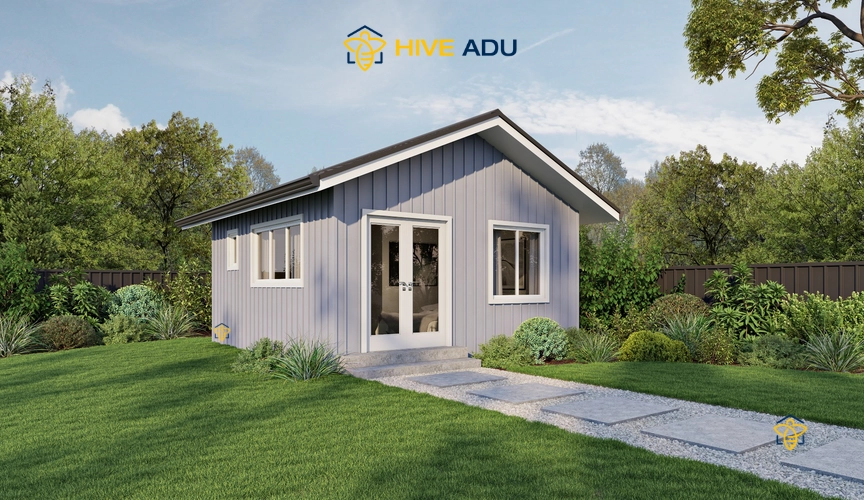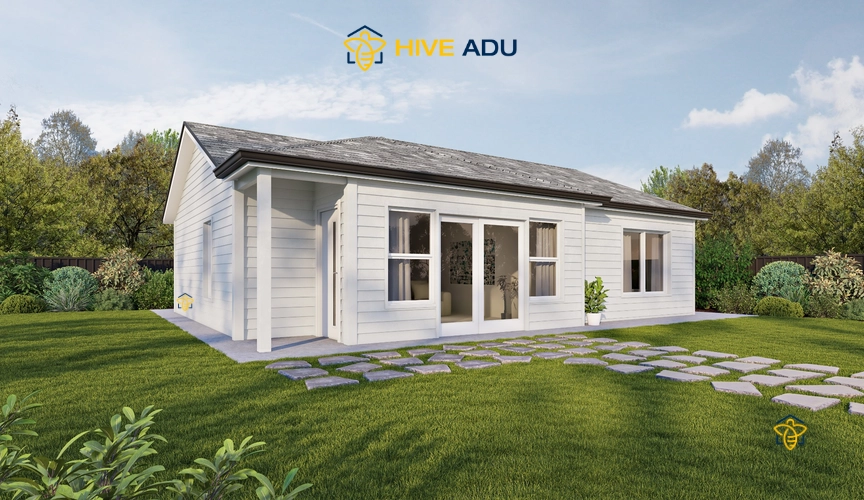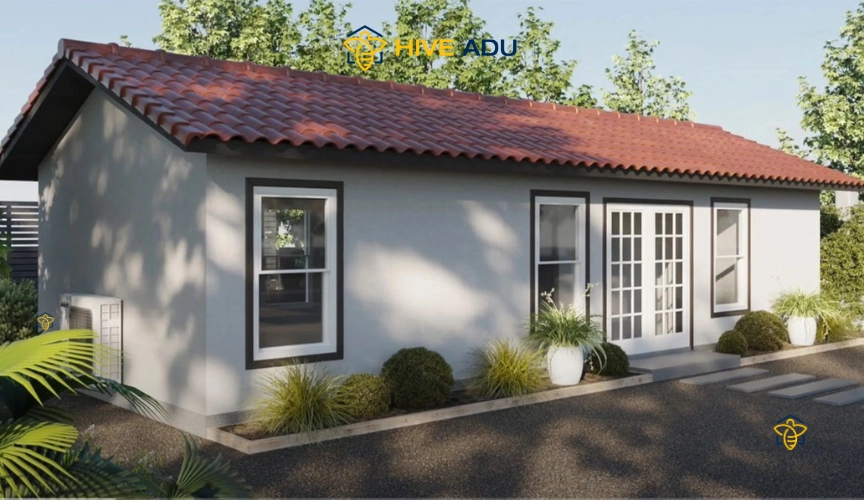Fillmore ADU Regulations
Building an Accessory Dwelling Unit (ADU) in Fillmore means following local zoning, setback, and permitting rules. Hive ADU helps homeowners every step of the way.
Claim your free Property Analysis and Estimate!
We respect your privacy and will never share your information.
Understanding Fillmore ADU Requirements
Fillmore provides homeowners opportunities to add ADUs while respecting the city’s small-town charm. This guide outlines Fillmore’s standards for accessory units, including lot requirements, height limits, setback guidelines, and approval processes. Hive ADU helps you navigate Fillmore’s regulations and build successfully.
Fillmore, California
As a professional ADU builder, we provide this updated guide to help you understand Fillmore’s Accessory Dwelling Unit (ADU) regulations. While this guide offers an overview, our expertise ensures your project complies with all local and state requirements.
Jurisdiction
- City Authority: The City of Fillmore regulates ADUs through its municipal code, with full compliance with California state ADU laws.
- Coastal Zone Considerations: Fillmore is inland and does not require Coastal Development Permits.
- Fire Hazard Areas: Certain neighborhoods may fall under High Fire Hazard Severity Zones and could require enhanced construction standards.
- Zoning Eligibility: ADUs are permitted on properties zoned for residential use, including single-family and multi-family lots.
We confirm your zoning and lot eligibility before beginning any design or planning.
State Law Overrides
- State Compliance: Fillmore follows all ADU mandates to simplify the permitting process.
- Ministerial Approval: ADU applications are processed without public hearings, provided they meet objective standards.
- Owner-Occupancy: Not required for ADUs. JADUs must be owner-occupied.
- Multiple Units: Single-family homes may add one ADU and one JADU. Multi-family parcels may qualify for multiple conversions and detached units.
We streamline your application using our local and state-level ADU law knowledge.
Maximum ADU Size
- Detached ADUs: May be up to 1,200 sq ft, subject to setbacks, lot coverage, and height restrictions.
- Attached ADUs: Limited to 50% of the primary dwelling’s floor area or 1,000 sq ft, whichever is smaller.
- JADUs: Up to 500 sq ft and must be within the primary residence.
- Conversions: No maximum size limit if converting an existing permitted structure.
We design your ADU to maximize usable space while fully complying with local code.
Setback Requirements
- Side and Rear Setbacks: Detached ADUs must maintain a 4-foot minimum setback from side and rear property lines.
- Front Setbacks: Must comply with existing front yard zoning requirements.
- Separation: A minimum 10-foot separation from other structures is required unless fire-rated walls are used.
- Conversions: Setbacks may not apply to ADUs that convert existing structures.
Site layout and compliance are reviewed thoroughly to avoid delays during planning and permitting.
Height Limits
- One-Story ADUs: Maximum of 16 feet in height.
- Two-Story ADUs: May be allowed up to 25 feet, depending on setback compliance and neighborhood context.
- JADUs: Must remain within the existing home’s height envelope.
Our architectural team ensures your design fits within height limitations without compromising your goals.
Parking Requirements
- General Rule: Unless exempt, one off-street parking space is required for the ADU.
- Exemptions: No additional parking is needed when:
- The ADU is located within ½ mile of public transportation.
- The unit is converted from a garage or other existing structure.
- The site is in a historic or environmentally sensitive district.
- Replacement Parking: Not required for garage conversions.
We evaluate parking needs and exemptions early in the design process to eliminate surprises.
Permit Process & Timelines
- Building Permit: Required for all ADU construction and conversion projects.
- Processing Timeline: Ministerial permit applications must be reviewed within 60 days of submittal.
- Discretionary Review: Not required for standard ADUs that comply with objective criteria.
We handle the full application process, including drawings, structural requirements, and submittals.
Impact Fees & Utilities
- Impact Fees: Waived for ADUs under 750 sq ft. Standard development fees may apply to larger units.
- Utility Connections: Shared or separate connections may be required, depending on the scope of work.
- School Fees: Required for ADUs over 500 sq ft, calculated per square foot.
Before project kickoff, we prepare a full cost summary, including fees and utility coordination.
Incentives & Rebates
- Grant Programs: State-sponsored ADU funding may be available for eligible homeowners.
- Permit Fee Reductions: Smaller units or affordable housing options may be available.
We help identify incentives and guide you through application processes to reduce overall costs.
Helpful Links
Building An ADU In Fillmore
Developing an ADU in Fillmore means working through residential zoning laws, building setbacks, and fire safety standards unique to the area. Hive ADU simplifies this process with start-to-finish support. We begin with a property assessment to verify eligibility and address any lot-specific limitations. Our in-house team then designs a custom ADU tailored to Fillmore’s codes and your project goals. We manage all permitting requirements, including school fee assessments and utility coordination, and oversee construction to ensure your ADU is completed on schedule and built with care.
Explore Hive ADU Models
See all our pre-designed ADU models, floorplans, and design finishes
Thinking about building an Accessory Dwelling Unit (ADU) in Ventura or Santa Barbara County? Download our comprehensive Hive ADU Model Guide for detailed floor plans, stunning 3D renderings, premium features, and turnkey pricing. Discover the perfect ADU for your property.
From studio to 3-bedroom ADU floor plans, our catalog features bright, space-maximizing designs tailored for Ventura and Santa Barbara county homeowners. Our free guide includes real-life examples, cost breakdowns, and tips for navigating zoning compliance. Whether you’re planning a granny flat, home office, or tiny home backyard rental, get actionable insights to simplify your build.






